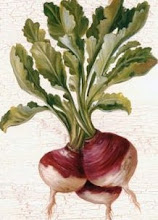 Tamshee's travels Continued -Knysna Heads is without doubt one of the most striking geological features along the entire southern African coastline. They flank a deep but potentially treacherous channel through which the sea pours in to flood the wide and breathtakingly pretty lagoon at the mouth of the Knysna River. Knysna's history began in the year 1804, the year that saw the arrival of George Rex, rumoured to be the illegitimate son of King George lll. He purchased the estate known as Melkhoutkraal on the shores of the lagoon and moved his entire family and considerable entourage down to Knysna to settle. Knysna is one of the Southern Cape coast's best known holiday destinations, situated between lush forests and the shores of the peaceful lagoon. The most well known attraction being the heads - two great sandstone cliffs guarding the mouth of the lagoon which connects the estuary with the sea. A lookout has been erected on the Eastern Head, commanding spectacular views of the lagoon, Leisure Isle and Knysna. The Western Head is a privately owned nature Reserve - Featherbed Bay. The Knysna Lagoon is one of the few places along the coast and in the world that supports a oyster hatchery.
Tamshee's travels Continued -Knysna Heads is without doubt one of the most striking geological features along the entire southern African coastline. They flank a deep but potentially treacherous channel through which the sea pours in to flood the wide and breathtakingly pretty lagoon at the mouth of the Knysna River. Knysna's history began in the year 1804, the year that saw the arrival of George Rex, rumoured to be the illegitimate son of King George lll. He purchased the estate known as Melkhoutkraal on the shores of the lagoon and moved his entire family and considerable entourage down to Knysna to settle. Knysna is one of the Southern Cape coast's best known holiday destinations, situated between lush forests and the shores of the peaceful lagoon. The most well known attraction being the heads - two great sandstone cliffs guarding the mouth of the lagoon which connects the estuary with the sea. A lookout has been erected on the Eastern Head, commanding spectacular views of the lagoon, Leisure Isle and Knysna. The Western Head is a privately owned nature Reserve - Featherbed Bay. The Knysna Lagoon is one of the few places along the coast and in the world that supports a oyster hatchery. And the Knysna Oysters are reputedly among the tastiest in the world - and having spent a considerable number of Rand on the Cultivated Pacific Oyster - and enjoying the lean, crisp flavour characterised by a nutty undertone - at the Oyster Tavern on more than one ocassion, I must confess that restaurant setting combined with the finest food and wine - life does not get much better. Next day with compulsory hang over - I visited the Millwood House Museum which houses material relating to the history of the town, and includes artifacts once owned by George Rex. It was built from yellowwood at the end of the previous century during the gold rush. Knysna has many attractions in the surrounding area as well, one of the most spectacular being the Knysna Forest, which is still evident in many places within the town as well. It is the largest indigenous forest in South Africa comprising of tall and ancient trees of local and exotic species, including stinkwood, yellowwood, blackwood, ironwood, white alders and Cape chestnut. Not forgetting the ferns, creepers and wild flowers which add colour to this endless green collage. The forest is vast and extremely dense in places making it impenetrable. Animal life is limited to a few small antelope and a large variety of birds, such as the famous Knysna Loerie. Home to the once great herds of Knysna Elephants, it is believed that only one lonely cow remains today. Another historical attraction are the Millwood Gold Mines. Alluvial gold was found here in 1885, which caused a rush to the area. At Jubilee Creek, the exact spot where gold was found, provides a tranquil and beautiful picnic area, with many enjoyable forest walks in the area. Buffalo Bay is the closest beach to knysna, one of the safest for swimming along the coast and enjoyed by many holiday makers every year.

To be continued - Outenique Choo Tjoe to Mossel Bay and back to work !!


0 comments:
Post a Comment